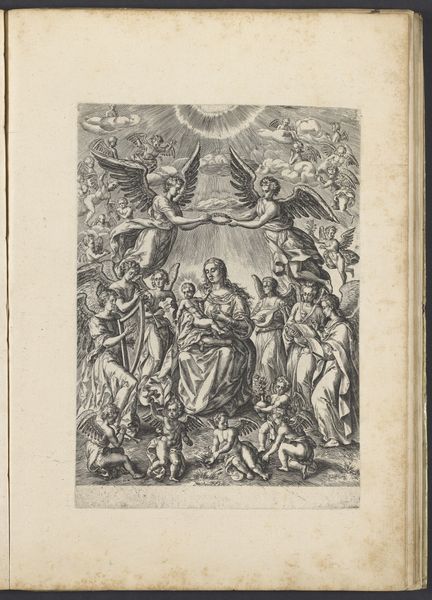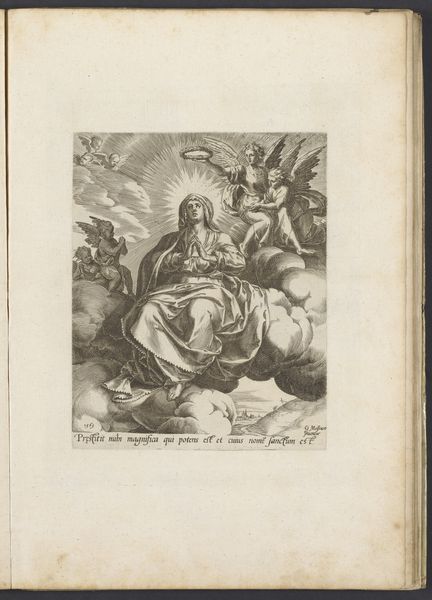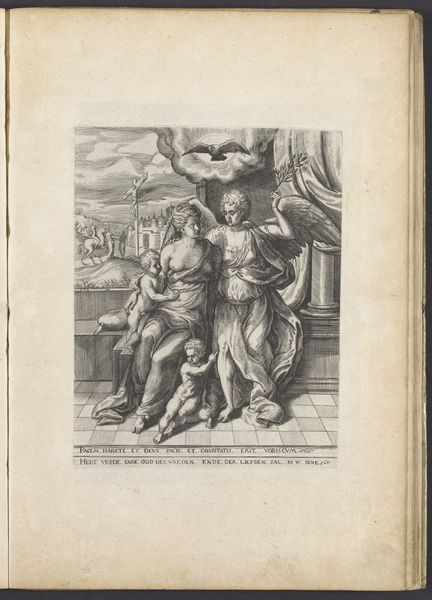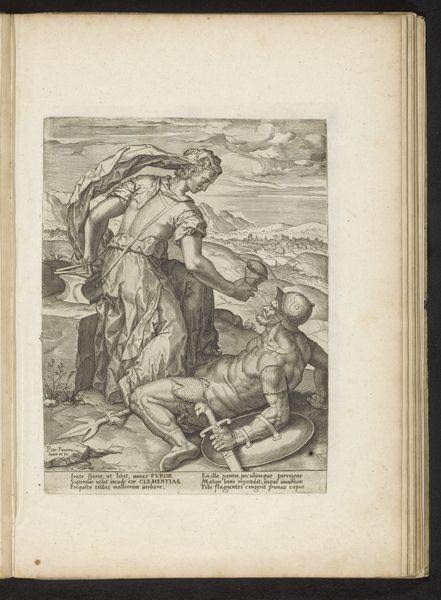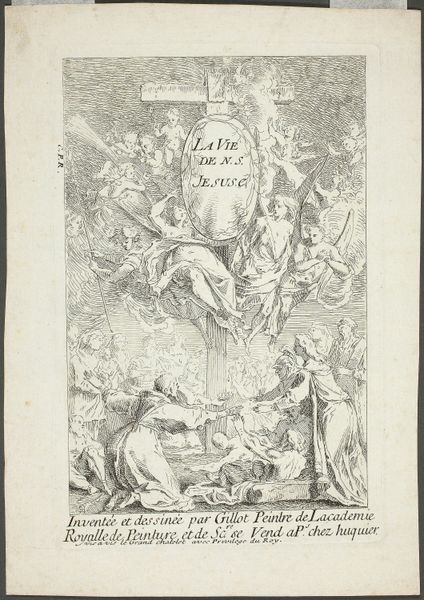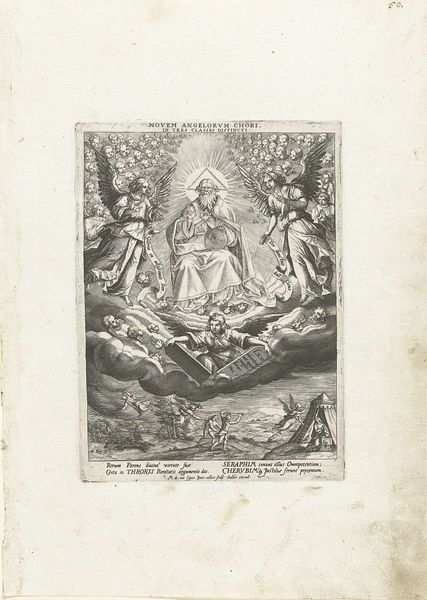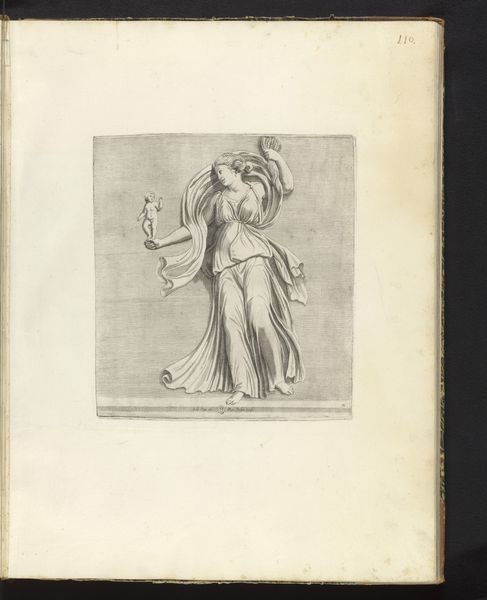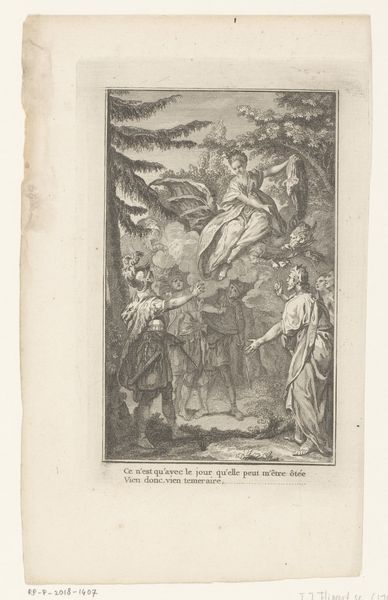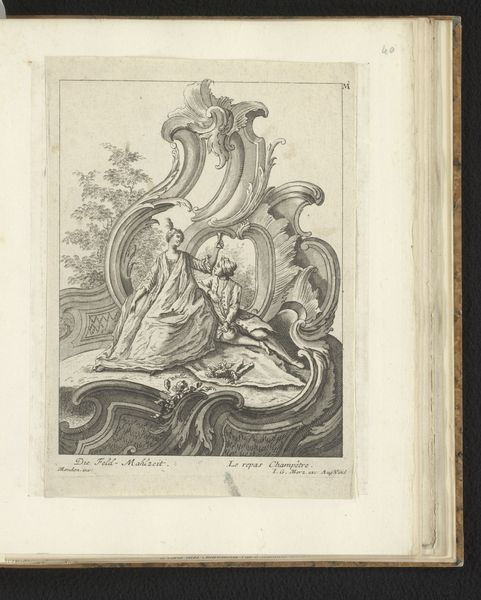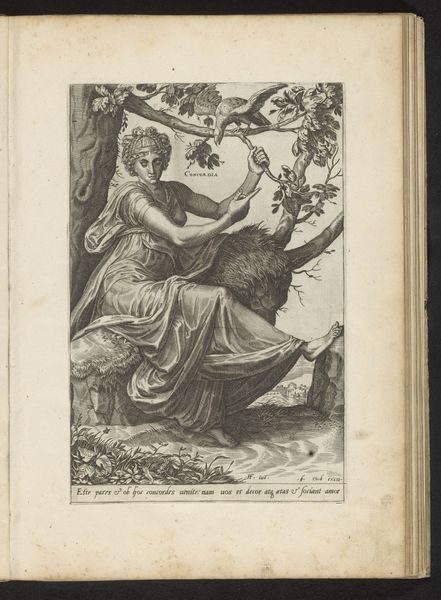
print, engraving
#
medieval
#
allegory
# print
#
figuration
#
history-painting
#
engraving
Dimensions: height 245 mm, width 194 mm
Copyright: Rijks Museum: Open Domain
Curator: This print, "Kroning van Maria," or "The Coronation of Mary," dates back to 1574 and is attributed to the Monogrammist HSD. It's an engraving. My immediate thought is the sheer quantity of labor required to produce something so detailed. The precision… Editor: It strikes me as serenely imposing. Mary is framed by swirling clouds and ranks of angels, ascending… it’s a powerfully hierarchical composition. Curator: It's interesting to consider this as an engraving - what tools would have been employed, how many prints could be produced before the plate wore down? There's a tangible element here, far beyond pure imagery. Editor: And how it participates in, or perhaps even reinforces, specific religious ideologies about female sanctity and submission. I mean, look at the almost architectural quality of the Virgin's gown. What power does that imagery hold, what is it communicating? Curator: Indeed. The production method directly relates to consumption: prints such as this could be replicated and distributed widely. Its use of allegory to convey religious messages made it invaluable in educating a largely illiterate population. What roles did such iconography play in reinforcing established religious orders? Editor: The engraving would likely have functioned both as a tool for personal devotion and perhaps even political propaganda during a turbulent time in religious history. What position does this assign to Mary as a mediator or a role model during the Reformation, with women negotiating shifts in societal power dynamics? Curator: That opens up an interesting avenue regarding the artist’s intent too; someone within the religious community crafting these ideals through reproducible images. Was the HSD Monogrammist himself religious, commissioned, or commercially invested in the distribution of such content? Editor: Regardless, examining such pieces today forces an evaluation beyond faith. "The Coronation of Mary" becomes a site where ideas about gender, divinity, and political power collide – demanding that we critically assess the context it operated within. Curator: Examining "The Coronation of Mary," we acknowledge that its physical existence directly contributed to societal dialogue, whether passively consumed or deliberately critiqued, throughout the Reformation and continuing into the present. Editor: Absolutely. Hopefully we are now equipped to confront the enduring significance behind this engraving, inspiring viewers to challenge orthodox thinking that dictates how religion and female identity can intersect.
Comments
No comments
Be the first to comment and join the conversation on the ultimate creative platform.
